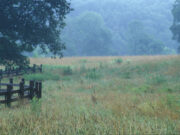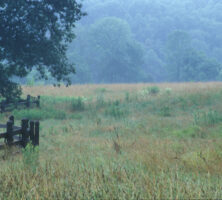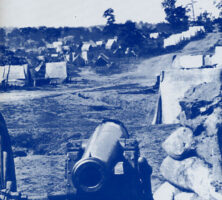The pastoral landscape of north Georgia served as the arena for contending Union and Confederate armies in one of the Civil War’s most decisive and crucial campaigns during the summer of 1864. Many of the bloodstained fields and forests where those Americans fought and died have long since given way to the bulldozer’s blade and are now marked by interstate exits, residential neighborhoods, fast-food restaurants, and other commercial facilities.
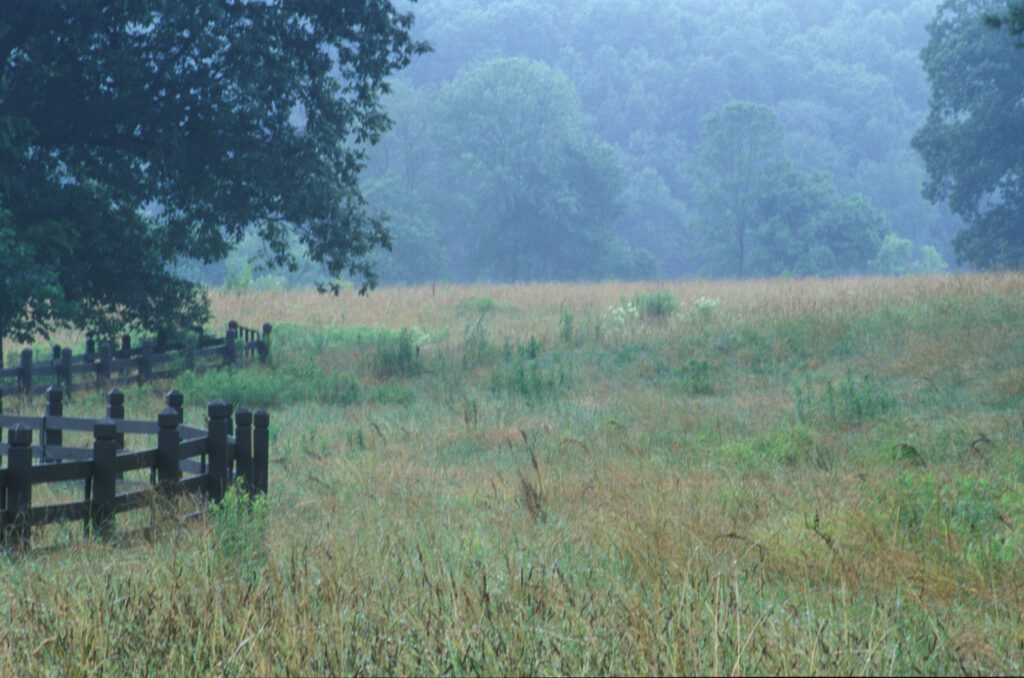
Courtesy of Historic Preservation Division, Georgia Department of Community Affairs.
The Georgia Civil War Commission, formed by the General Assembly in 1993, coordinates the planning, preservation, and promotion of structures, battlefields, and other sites that are associated with the Civil War (1861-65) but not already managed by the state or federal government, as are Fort Pulaski and the battlefields at Chickamauga and Kennesaw Mountain. The commission consists of fifteen volunteers appointed by the governor, lieutenant governor, and Speaker of the Georgia House of Representatives.
Although the sites associated with the 1864 Atlanta campaign, nearly all located along the Interstate 75 corridor linking Atlanta with Chattanooga, Tennessee, are those most threatened by development, other Civil War–related properties across the state are equally valuable historic resources.
One of these, the battlefield at Griswoldville in middle Georgia (in Jones and Twiggs counties), was an early preservation victory for the commission. In June 1997 the group acquired seventeen acres at the site of the only infantry engagement prior to Union general William T. Sherman’s arrival in Savannah during the March to the Sea. That land is now a state historic site.
From its formation, the commission focused on the preservation of the battlefield at Resaca, the first major engagement of the Atlanta campaign. In 2000 a major Civil War preservation victory was realized when the state purchased a 508-acre tract of that battlefield, located near Dalton in present-day Gordon and Whitfield counties. The commission was a key player in facilitating the sale.
In September 2002 commissioners brought together several parties to fund the purchase of a 190-acre tract in southwest Atlanta near the Utoy Creek battle site. The parcel, which was included on the national Civil War Preservation Trust’s list of the nation’s ten most endangered sites, is laced with a network of pristine earthworks dug by Union troops during the siege of Atlanta in August 1864.
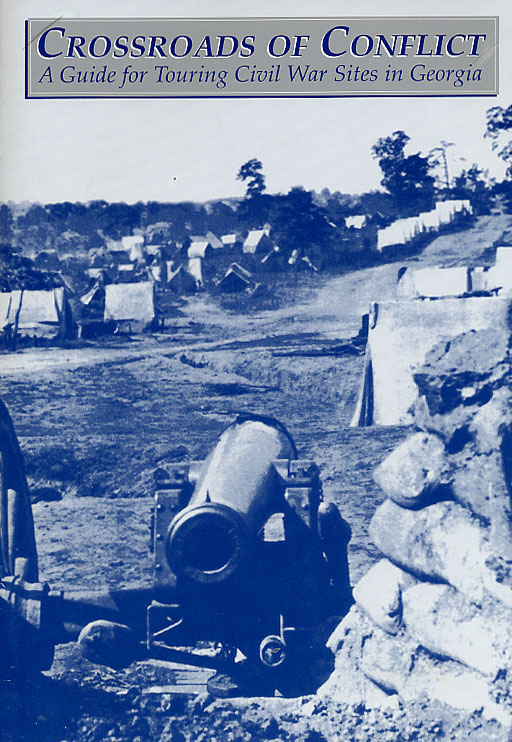
The commission publishes Presence of the Past, a color brochure available to visitors in Georgia’s welcome centers and at other locations around the state. In 2010 it copublished a revised edition of Crossroads of Conflict, a detailed guidebook to the state’s Civil War sites, with the University of Georgia Press, the Georgia Department of Economic Development, and Georgia Humanities. It has sponsored and hosted national conferences and education and preservation forums and has networked extensively with local, state, and national preservation groups. Commissioners are regularly asked to endorse preservation efforts and serve as speakers at meetings and lectures.
Despite extremely limited funding, the Georgia Civil War Commission continues to raise awareness of preservation issues across the state and to promote contact between preservation groups.


